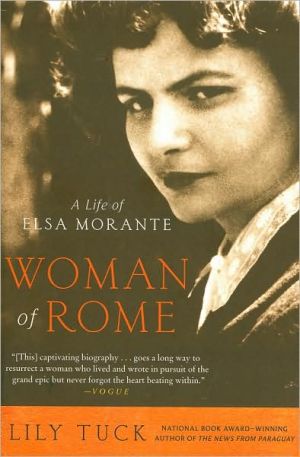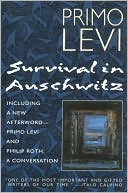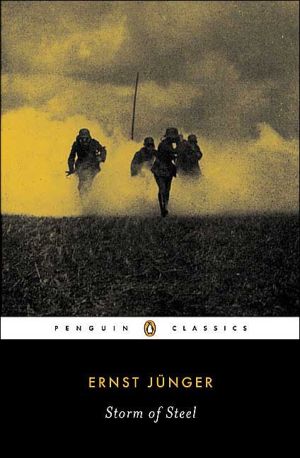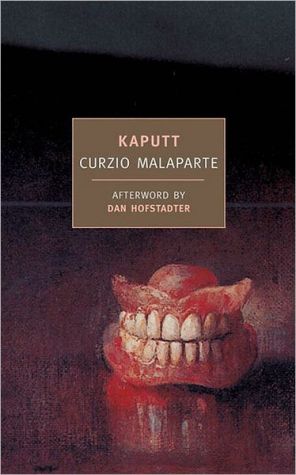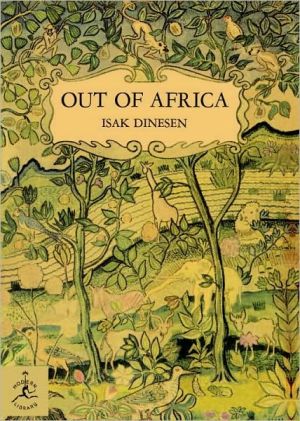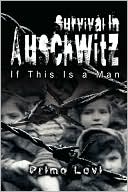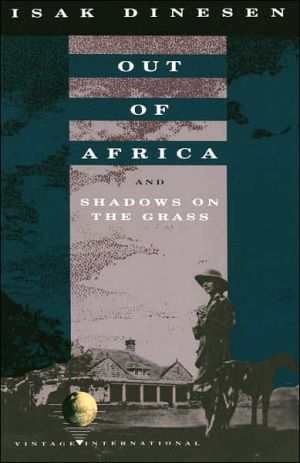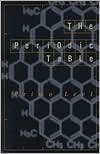Woman of Rome: A Life of Elsa Morante
The first biography in any language of one of the most celebrated Italian writers of the twentieth century.\ Born in 1912 to an unconventional family of modest means, Elsa Morante grew up with an independent spirit, a formidable will, and an unshakable commitment to writing. Forced to hide from the Fascists during World War II in a remote mountain hut with her husband, renowned author Alberto Moravia, she re-emerged at war's end to take her place among the premier Italian writers of her day....
Search in google:
Elsa Morante was born in 1912 to an unconventional family of modest means. She grew up with an independent spirit, a formidable will, and a commitment to writing she wrote her first poem when she was just two years old. During World War II, Morante and her husband, the celebrated writer Alberto Moravia, were forced to flee occupied Rome Moravia was half-Jewish (as was she) and wanted by the Fascists and hide out in a remote mountain hut. After the war, Morante published a series of prize-winning novels, including Arturo's Island and History, a seminal account of the war, which established her as one of the leading Italian writers of her day. Lily Tuck's elegant and unusual biography also evokes the heady time during the postwar years when Rome was the film capital of the world and Morante's counted among her circle of friends the filmmakers Pier Paolo Pasolini, Luchino Visconti, and the young Bernardo Bertolucci. A charismatic and beautiful woman, Morante had a series of love affairs most unhappy as well as friendships with such famous literary luminaries as Carlo Levi, Italo Calvino, and Natalia Ginzburg. As a couple, Morante and Moravia the Beauvoir-Sartre of Italy captivated the nation with their intense and mutual admiration, their arguments, and their passion. Wonderfully researched with the cooperation of the Morante Estate, filled with personal interviews, and written in graceful and succinct prose, Woman of Rome introduces the American reader to a woman of fierce intelligence, powerful imagination, and original talent. The Barnes & Noble Review "There does not exist in all of Italian literature a writer who is loved and hated, more read and more ignored, than Elsa Morante," wrote the critic Cesare Garboli. There were reasons why Morante (1912-85) has often been passed over, despite her undoubted talent and originality. In the first place, she was resolutely anti-ideological in a passionately ideological age; then, her style was a disconcerting mixture of the traditional, the postmodern, and the Freudian. In a word, she was impossible to classify -- and literary critics are always uncomfortable with work that doesn't slip easily into some obvious category. Her fellow writers accorded her great respect, and Alberto Moravia always answered "Elsa Morante" if anyone asked him who was the most important Italian writer of his generation -- but then, he was her husband, so what else could he say? Oddly enough, Lily Tuck's Woman of Rome: A Life of Elsa Morante, now appearing more than 20 years after Morante's death, is the first biography of the writer to appear in any language.
Woman of Rome\ A Life of Elsa Morante \ Chapter One\ Two Uncles\ The year of Elsa Morante's birth is well known. But, as a favor, in an autobiographical piece she wrote in 1960, she has asked that her biographer not mention the date—not because she is vain but because, for her, one year is as good as the next and she would prefer to remain ageless.1 It is the same year that the Titanic set out on its doomed maiden voyage with 2,224 passengers and crew members on board; the same year that Germany, the Austro-Hungarian Empire and Italy renewed the Triple Alliance; the year of the outbreak of the Balkan War, which set the stage for World War I; the year the Olympic games were held in Stockholm and the twenty-four-year-old Native American Jim Thorpe won both the pentathlon and decathlon (he was later stripped of his medals when it was learned that he had played semiprofessional baseball); in the United States, the year that New Mexico and Arizona became states; the year that the German geologist and meteorologist Alfred Lothar Wegener proposed his theory of continental drift, arguing that the earth's continents had once been a single large landmass and were still in the process of change; and, finally, in Rome, the year that the first activities of the Italian Boy Scouts, founded by Carlo Colombo and known as Giovani Esploratori Italiani, took place.\ In a poem Elsa Morante wrote many years later, she claimed to have been born of a "difficult love" at that "bitter hour at midday / under the sign of Leo / on a Christian feast day."2 She also claimed in "Our Brother Antonio," anewspaper piece she published in 1939, that from the very day of their birth, she and her brothers all showed themselves to be extraordinary paragons of virtue. She for example was born with a crown of gold hair so thick and so long that, immediately, the attending nurse who delivered her had to braid and tie it with a blue ribbon.3 (Photos, however, always show Elsa with short, dark hair—so what, one wonders, could she have been thinking of? And what, one also wonders, is true?) At the time of Elsa's birth, the Morante family lived at via Anicia 7 but, soon after, they moved to a small, squalid apartment on via Amerigo Vespucci 42, located in the Testaccio, which was then a working-class district of Rome. Later, Elsa Morante said she grew up in the company of both poor and rich children (the latter no doubt the children of the friends of Elsa's rich godmother, Donna Gonzaga) and thus she learned not to judge anyone by social class but by his or her kindness instead. In fact, the cruelest child she ever met, who made her drink gasoline, was the son of a butler while the nicest was a young patient at Gabelli (a famous Roman hospital which treated only venereal diseases), which, in retrospect, made her wonder what sort of pervert he may have been. Elsa learned the alphabet and learned to write at the same time. She claimed to have composed her first poem when she was two and a half years old:\ \ Un povero galletto\ che stava alla finestra\ gli casca giù la testa\ e va e va e va.\ Un gallo piccolino\ che stava alla finestra\ gli casca giù la testa\ e non vede più e più\ A little rooster\ who was at the window\ fell down on his head\ and went and went and went.\ A small little rooster\ who was at the window\ fell down on his head\ and he nothing nothing sees.\ \ Not only was Elsa Morante a self-taught prodigy, she invented herself. At an early age, too, Elsa Morante imagined herself as other, as a boy. A boy, she thought, could be heroic; a girl could not.\ Elsa Morante was the oldest of four surviving children. An older brother, Mario, whom Elsa always inexplicably referred to as Antonio and to whom, later, she addressed her diary, died shortly after he was born. According to Elsa, this Mario/Antonio opened his eyes and saw the light and was so disgusted that he quickly closed them again. According to Elsa's mother, who spoke of him often, comparing him to a famous king, had Mario/Antonio lived, he would most certainly have become a prophet or a genius and brought honor to the family.4 Elsa described her brother Aldo, who was two years younger, as lively and rebellious; she also said that Aldo had a large black birthmark on his forehead (but there is no sign of the birthmark on any of the photographs of him nor does Aldo's son, Paolo Morante, recall seeing a birthmark on his father's forehead5). Marcello, the younger brother, was timid and shy and, early on, according still to Elsa, was prone to amorous attachments; five or six minutes after he was born he developed one for the nurse who delivered him, grasping her finger and not letting go. Finally, there was Maria, the youngest child—younger than Elsa by ten years.\ Elsa's mother, Irma Poggibonsi,* came from the town of Modena in northern Italy; she was a schoolteacher and had literary aspirations. She was also Jewish and since she was terrified of being discovered to be Jewish, she made sure her children got a Catholic education. (When World War II broke out, she changed her name to Bisi and went into hiding in Padua, taking the youngest, Maria, with her. Marcello was sent to Tuscany: Aldo was interned in a concentration camp; Elsa, by then, was living on her own in Rome.) Little is known of Irma's family. Her father was a hunchback whom everyone in the family was deeply ashamed of; Irma's mother had repeated breakdowns that manifested themselves in various ways: locking herself up in the bedroom and running back and forth, battering her head against the walls until either her head cracked open or she was knocked unconscious.\ Woman of Rome\ A Life of Elsa Morante. Copyright © by Lily Tuck. Reprinted by permission of HarperCollins Publishers, Inc. All rights reserved. Available now wherever books are sold.
Introduction 11 Two Uncles 72 Secret Games 233 Diary 1938 374 The War Years 535 House of Liars 736 Rome 897 Arturo's Island 1098 Without the Comfort of Religion 1299 Poetry and Pasolini 14310 The World Saved by Children 15711 History 17512 Aracoeli 19713 Elsa's Death 213Epilogue 223Notes 227Works by Elsa Morante 245Acknowledgments 247Index 251
\ Louisa Ermelino"One literary doyenne takes on another in Lily Tuck’s wonderful, sensitive biography of Elsa Morante...This is one not to miss, both for its subject and its exquisite prose."\ \ \ \ \ Mary Gordon"Everyone who cares about the literature of the 20th century must be grateful to Lily Tuck for her measured, elegant, and revelatory biography of Elsa Morante."\ \ \ Susanna Moore"Lily Tuck understands Morante instinctively—it is as if Morante has been waiting for her, as if this book is a part of all that she lived for."\ \ \ \ \ Phillip Lopate"For worldly understanding alone, there is nothing of recent vintage quite like this entrancingly written and compellingly forthright biography."\ \ \ \ \ Booklist"Written with a charming personal touch...that warms the narrative to a fine glow, this is a vital biography bringing to American audiences a writer most will have previously known little about."\ \ \ \ \ Boston Globe"...well-researched, empathetic "Woman of Rome" is both a work of literary reclamation and an act of long, deep, devoted connection...[Morante’s] life and work come alive in this account."\ \ \ \ \ Booklist (starred review)“Written with a charming personal touch...that warms the narrative to a fine glow, this is a vital biography bringing to American audiences a writer most will have previously known little about.”\ \ \ \ \ Atlantic Monthly"Equal parts literary biography and liberation tract, this engaging volume...elegantly achieves its dual aims. Rarely have subject and biographer been so aptly matched."\ \ \ \ \ Los Angeles Times"Tuck is fascinated by Morante’s drive to continually reinvent herself and blends memories of her own childhood into Morante’s story, memories that add texture and a sense of honesty to the biography."\ \ \ \ \ Chicago Tribune"Woman of Rome is a dazzling read, full of passion for the odyssey of a writer."\ \ \ \ \ Washington Post"A lovely and worthy biography, the first of Morante to appear in any language."\ \ \ \ \ Mindy AloffMorante counted among her close friends the filmmakers Luchino Visconti, Pier Paolo Pasolini and Bernardo Bertolucci: Woman of Rome contains telling anecdotes of them all. Among its many virtues is the way it fills us in on the glamour (and cruelties) of postwar Rome. Still, the ultimate virtue here is Tuck's almost daughterly effort to demonstrate how Morante's writing can excite a reader today, and why this unhappy yet vital artist, ultimately married to solitude, ought to be remembered, without scumbling the harsher aspects of the woman's personality. Tuck also extends her sense of fair play to Morante's lovers and friends, beginning with Moravia, one of whose novels is alluded to in the title of this lovely and worthy biography, the first of Morante to appear in any language.\ —The Washington Post\ \ \ \ \ Publishers WeeklyNovelist Elsa Morante and the city she symbolized come alive in this warm, sprightly literary biography. Novelist Tuck (The News from Paraguay) surveys Morante's life: her troubled relationship with an unstable mother; her salad days writing magazine pieces along with having to occasionally resort to prostitution to make a living; World War II, when she and husband, Alberto Moravia, both halfJewish, hid out from Fascist persecution in a mountain village; her postwar dolce vita immersed in friendships, affairs and dinnertable debates with Rome's glitterati. Morante emerges as a complex, vibrant character-difficult, mercurial and fiercely (often rudely) devoted to truthtelling, but also kindhearted and charismatic. Tuck ties the biographical details-and analyses of her subject's dreams and handwriting-to sympathetic but critical analyses of Morante's protean works, which include the hothouse melodrama of House of Liars, the darkly beguiling Huckleberry Finn fable of Arturo's Island and the pitiless meditation on force and corruption of her bestselling History. Tuck sets the life in a colorful evocation of Morante's milieu, enlivened by her own youthful reminiscences of Italy's postwar film scene, that makes the book a love letter to Rome as well as to her subject. Photos. (July 29)\ Copyright © Reed Business Information, a division of Reed Elsevier Inc. All rights reserved.\ \ \ \ \ Library JournalNational Book Award winner Tuck (The News from Paraguay) here examines the life of Italian writer Elsa Morante, who made a significant contribution to Italian literature of the last century with such novels as House of Liars and History. The 20th anniversary of Morante's death in 2005 saw a renewed interest in the writer, both in Italy and abroad. In researching this book, Tuck interviewed many of Morante's friends, contemporaries, and family members, and through this research, she succeeds in depicting every aspect of Morante's life, including her unconventional childhood, complicated marriage, terrifying wartime years spent in hiding, literary successes, numerous love affairs, and poignant final years. As the author here discloses, her father frequented some of the same social circles as Morante and her husband, novelist Alberto Moravia. Her descriptions of a bygone era-e.g., the Rome of the late 1950s and early 1960s-are superb. After all, Tuck lived it. Recommended for all libraries that support an Italian literature collection. (Photos and index not seen.)\ —Erica Swenson Danowitz\ \ \ \ \ \ Kirkus ReviewsFrom National Book Award-winning novelist Tuck (The News from Paraguay, 2004, etc.), a concise biography of the Italian writer whose fiction explored the power of make-believe and the delusions by which people live. Elsa Morante (1912-85) was unconventional from the moment of her birth-the eldest of four, all fathered by a man not their mother's husband-to after her death, when a group of friends dug up her cremated remains and took them to be scattered in the waters surrounding the island of Procida, the setting for her beloved 1957 novel, Arturo's Island. She married fellow novelist Alberto Moravia in 1941 and was still his wife when she died, but they had lived apart for years and had never been faithful, though they remained friends. Desperately poor as a struggling young writer, Morante displayed in her fiction a profound sympathy for the oppressed, the misfit and those disfigured or incapacitated by disease. This attitude would find its most emphatic expression in her 1974 bestseller History, controversial among Italy's left-leaning intellectuals because the politically unaligned Morante painted such a pessimistic picture of proletarian life and the depredations of power. Fiercely devoted to truth-telling, she could be an uncomfortable person to know, but she was generous and loyal to her friends. (And expected the same; she never spoke again to Pier Paolo Pasolini after he brutally panned History.) She had wild mood swings, but loved pretty clothes, handsome men (she was one of director Luchino Visconti's many lovers) and good food and conversation. Well-known and respected in Italy, Morante's work is much more obscure in the English-speaking world, and it's not quite clear whyTuck chose to write about her. Though the biographer offers appreciations of the individual novels, she never really conveys a coherent picture of Morante's achievements as a writer. Those content with a vivid evocation of her powerful personality, however, will be satisfied by Tuck's graceful apercus. Lucid and intelligent, but perhaps a little too low-key. Agent: Georges Borchardt/Georges Borchardt, Inc.\ \ \ \ \ The Barnes & Noble ReviewThere does not exist in all of Italian literature a writer who is loved and hated, more read and more ignored, than Elsa Morante, wrote the critic Cesare Garboli. There were reasons why Morante (1912-85) has often been passed over, despite her undoubted talent and originality. In the first place, she was resolutely anti-ideological in a passionately ideological age; then, her style was a disconcerting mixture of the traditional, the postmodern, and the Freudian. In a word, she was impossible to classify -- and literary critics are always uncomfortable with work that doesn't slip easily into some obvious category. Her fellow writers accorded her great respect, and Alberto Moravia always answered "Elsa Morante" if anyone asked him who was the most important Italian writer of his generation -- but then, he was her husband, so what else could he say? Oddly enough, Lily Tuck's Woman of Rome: A Life of Elsa Morante, now appearing more than 20 years after Morante's death, is the first biography of the writer to appear in any language. \ Much of Tuck's own 1950s youth was spent in Rome, where her father, a film producer, operated on the periphery of Morante and Moravia's circle. Morante's close friends included the brightest stars of the era: Luchino Visconti, Pier Paolo Pasolini, Italo Calvino, Cesare Pavese, Vittorio De Sica. It was a heady, glamorous time when the city was reveling in liberty and prosperity after the horrors of war, and Morante was one of its oracles. She was the author of the provocative novels House of Liars (Menzogna e sortiletio, 1948), Arturo's Island (L'isola di Arturo, 1957), and the hugely successful History (La storia, 1974), which sold 800,000 copies in its first year and fascinated all of intellectual Italy: "For the first time since anyone can remember," wrote a New York Times commentator, "people in railroad compartments and espresso bars discuss a book -- the Morante novel -- rather than the soccer championship or latest scandal. The critics write endlessly about the meaning of La Storia and the reasons for the exceptional stir it is causing."\ Morante's rise from obscurity was dramatic. Her mother, Irma, had been a schoolteacher, a Jewish woman who raised her children as Catholics; her legal father was a probation officer in a boys' reform school in Trastevere. Sexually impotent, the poor man was mocked and vilified by his wife, who relegated him to a basement room and made him eat his meals separately from the rest of the family. It seems clear that Irma's lover Francesco Lo Monaco -- handsome "Uncle Ciccio" -- was the real father of Elsa and her siblings. It is hard to imagine a more bizarre family drama, and one can easily understand Elsa's fascination with Freud and his theories, especially his emphasis on dreams and their interpretation -- a fascination that is everywhere evident in her fiction. "Dreams, what miracles!" she wrote. "...One word, one look suffices to propel a dream toward nameless paths, adventurous voyages. It is like a thread which turns itself into fabulous lace. Could that be the secret of art? To remember how one saw the work in a dream state, to try to say again how one saw it, to try above all to remember. For to invent, no doubt, is to remember."\ Morante left home at the age of 18, moving to a single furnished room near the Piazza Venezia. The next decade was a time of struggle, during which she often went hungry and had to supplement her meager income from writing and teaching with occasional forays into prostitution. Tuck reminds us that extremely conservative, Catholic values were still in place, and Rome was a dangerous place for single girls: "Young Italian middle-class women lived at home with their parents and not in apartments alone....Their lives were defined by their family." In those days "a young woman could not walk down the street, ride a bus, without some predatory man following her, speaking to her, trying to molest her."\ Morante had met Moravia in 1937. Their relationship was to endure for a quarter of a century, but it was never entirely satisfactory to either party; Morante was humiliated by Moravia's greater success, fame, and social status and by the fact that he was never really in love with her, while he often felt oppressed by her stormy and imperious nature. In the early years he was fascinated by "an extreme, heart-rending, passionate quality in her character. It was as if every day of her life were the last, just before her death" -- but when he finally broke away, decades later, he admitted to feeling "a sense of absolute physical liberation. As if I had rid myself of something heavy, like a plaster cast."\ Mussolini made his infamous pact with Hitler in 1938, and the anti-Semitic Italian racial laws went into effect the same year. Morante and Moravia, half Jewish, had to flee Rome during the war, making their way to a remote village in the South where they spent nine months living in a one-room, mud-floored hut, helped by local peasant families. (Moravia's novel La ciociara [Two Women] and Morante's story "The Sicilian Soldier" were inspired by these events.) Back in Rome after the war their careers flourished, and they become a recognized literary couple. Critics and fellow writers began to pay attention to Morante's strange work, with its characteristic themes such as "the abandoned children raised in isolation in semi-magical places, the destructive power of possessive parental love and the not so redemptive quality of conjugal love." In The New Yorker, Maeve Brennan marveled at Morante's powerful characters, "operatic in their transports of fury and despair.... She seems afraid of nothing, except, possibly, the dullness and resignation of a sensible solution."\ This operatic flair carried over into her life. At one point she fell in love with the bisexual Visconti and planned to run off with him; predictably, he failed to show up at their rendezvous. Moravia vividly recalled "how Elsa flaunted her grief and suffering over losing Visconti." At 50, she had a passionate affair with a young American half her age, as sexually ambiguous as Visconti; he fell to his death from a Manhattan rooftop, a possible suicide. Old age, illness, and ugliness defeated her; in 1983 she tried to take her own life, but the attempt failed and she lived on for a few more years in pain and humiliation.\ Tuck's biography is important because it is the only one there is, but it must be said that it is a disappointment. It is terribly thin, and in many places Tuck has done little more than skim the surface. Rome in the wartime and postwar years was a dramatic, violent, gorgeous, and creative city; Morante's work is fascinating and relatively unknown to American readers; she and Moravia were at the vortex of a remarkable and highly colored group of artists and thinkers. Tuck has served up an enticing taste of all this, but it is hardly a meaty repast. --Brooke Allen\ Brooke Allen is the author of Twentieth-Century Attitudes; Artistic License; and Moral Minority. She is a contributor to The New York Times Book Review, The New Criterion, The New Leader, The Hudson Review, and The Nation, among others. She was named a finalist for the 2007 Nona Balakian Citation for Excellence in Reviewing from the National Book Critics Circle.\ \ \
